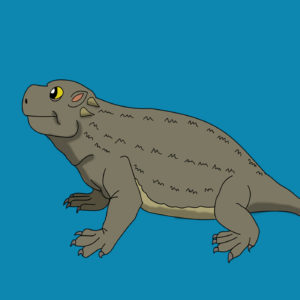Buru (boo-roo)
Burus were large aquatic reptiles that lived throughout the tropics of Fabella. Burus had webbing on the toes of the hind feet and could better tolerate saltwater due to specialized salt glands for filtering out the salt. Buru size, morphology, behavior and ecology somewhat differed between species. However, they had many similarities in these areas as well. All burus were semiaquatic as they tended to congregate in freshwater habitats such as rivers, lakes, wetlands and sometimes in brackish water and saltwater. They were carnivorous animals, feeding mostly on vertebrates such as fish, smaller reptiles, birds, and mammals. A buru’s physical traits allowed it to be a successful predator. Its external morphology was a sign of its aquatic and predatory lifestyle. Its streamlined body enabled it to swim swiftly, it also tucked its feet to the side while swimming, which made it faster by decreasing water resistance. They had webbed feet which, though not used to propel the animal through the water, allowing them to make fast turns and sudden moves in the water or initiate swimming. Webbed feet were an advantage in shallower water, where the animal sometimes moved around by walking. Burus had a palatal flap, a rigid tissue at the back of the mouth that blocked the entry of water. The palate had a special path from the nostril to the glottis that bypasses the mouth. The nostrils were closed during submergence.
Burus showed signs of intelligence. They were one of a few predators that could observe behavior, such as patterns when animals came to the river to drink at the same time each day. The sticks were placed on their snouts and submerged themselves, and when the birds swooped in to get them, the burus would then catch them. burus only did this in spring nesting seasons of the birds, when there was a high demand for sticks to be used for building nests. Aside from using sticks, burus were also capable of cooperative hunting. Large numbers of burus swam in circles in order to trap fish and took turns snatching them. In hunting larger prey, burus swarmed in with one holding the prey down as the others ripped it apart.

